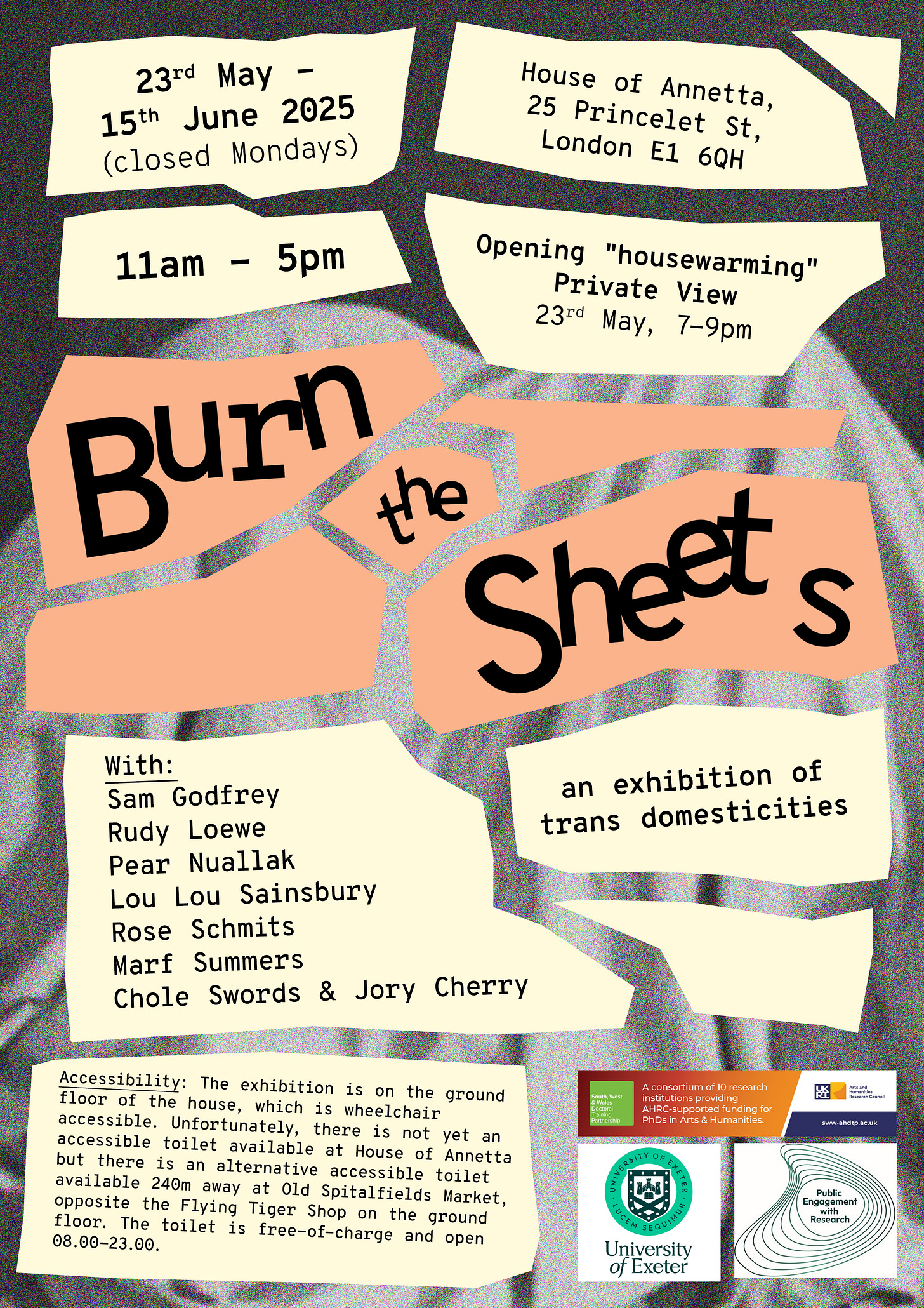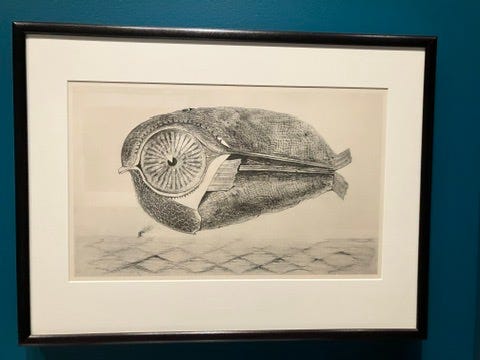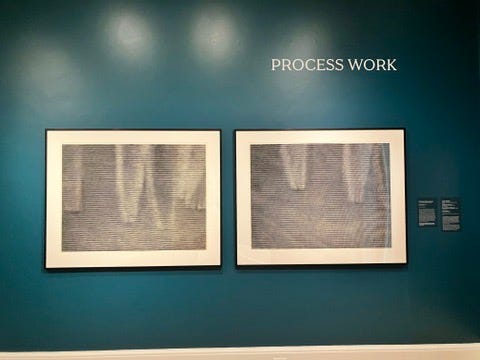Burn the Sheets: how to design trans domesticity
On view at the House of Annetta in London until this Sunday.
If you find yourself in London in the next week, I would like to suggest to you to check out this group show of eight trans artists at the House of Annetta, Burn the Sheets, curated by Marf Summers and Sam Godfrey. I had the pleasure of designing the identity and visual language for the show, including the catalogue and the exhibition labels, for this show about trans domesticity.
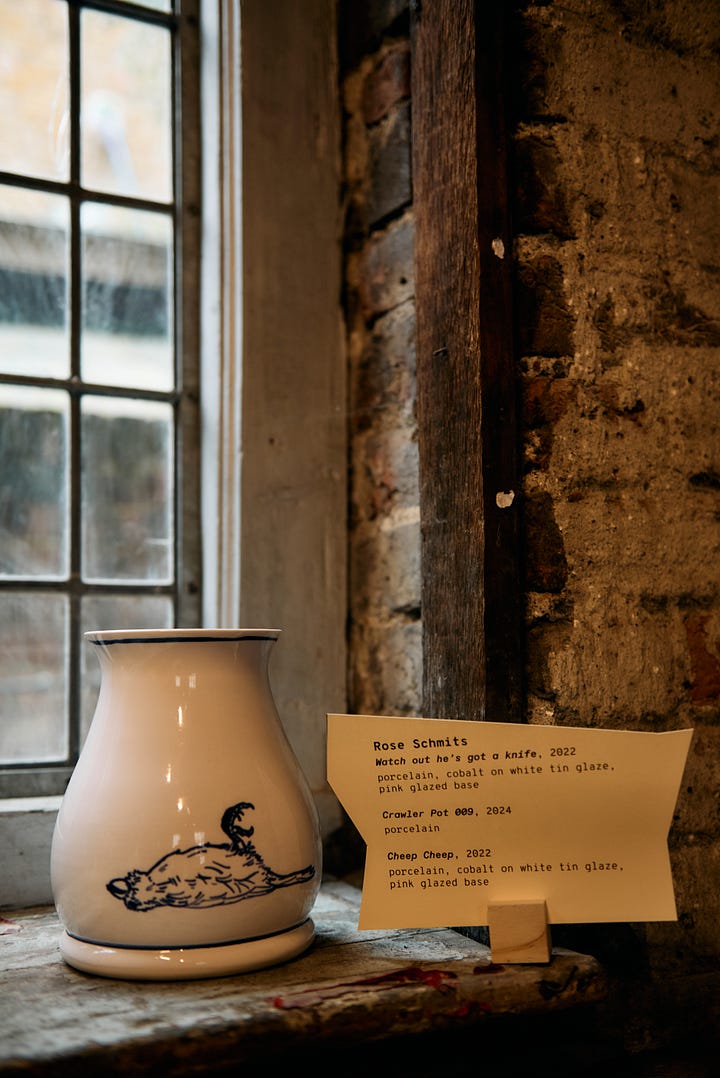
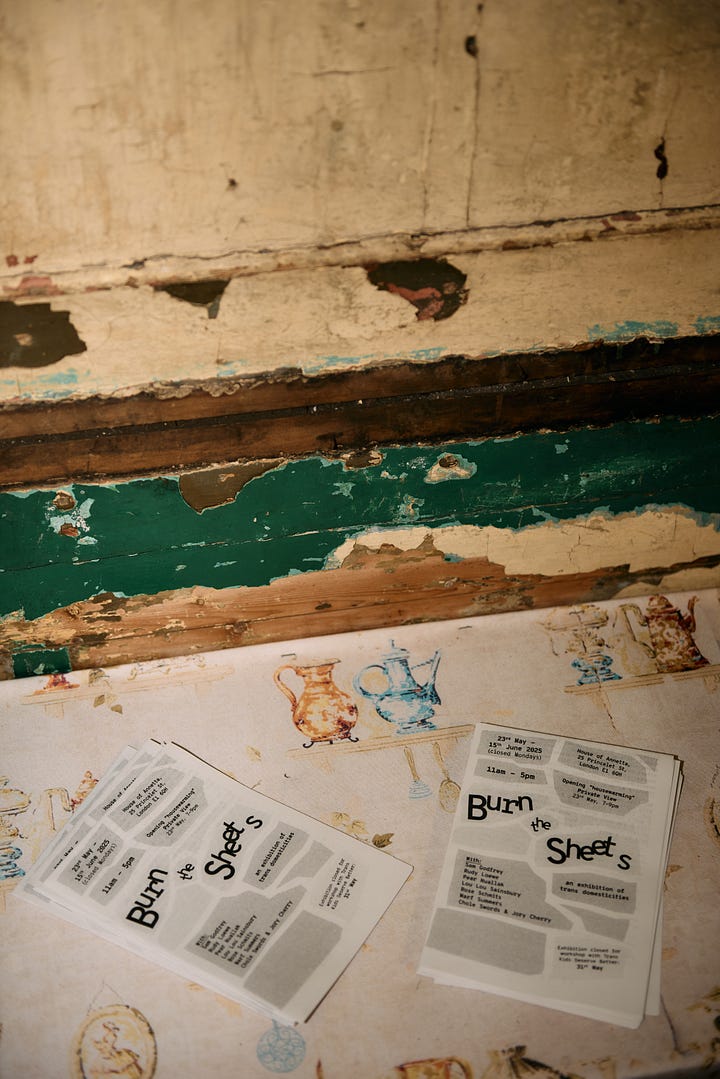
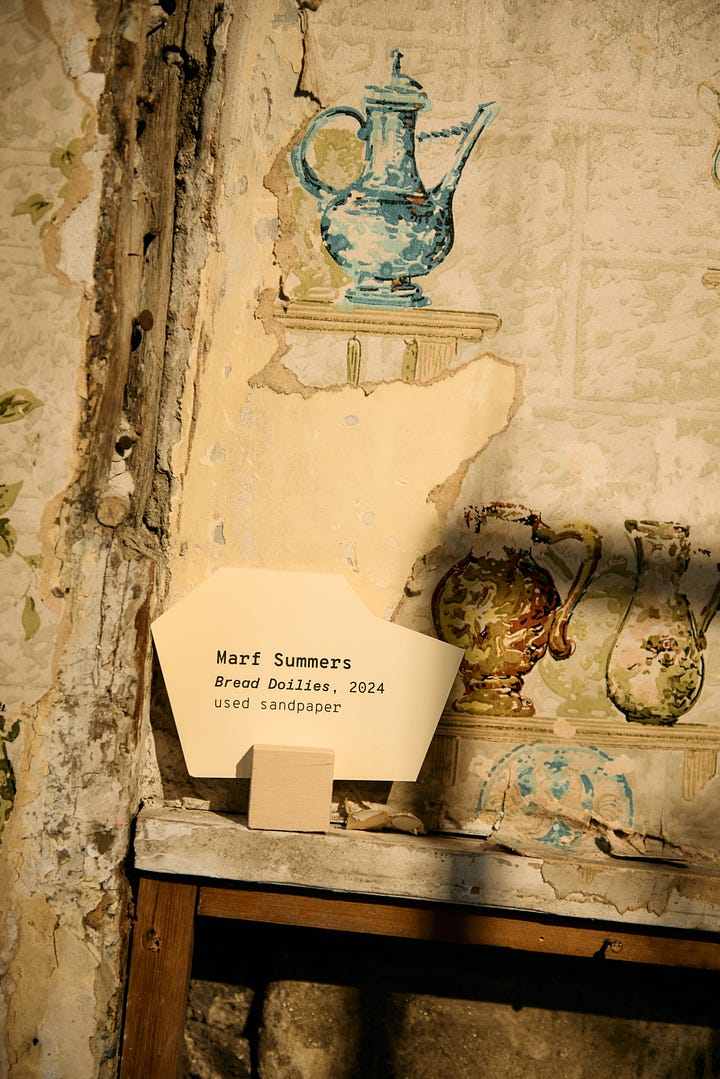
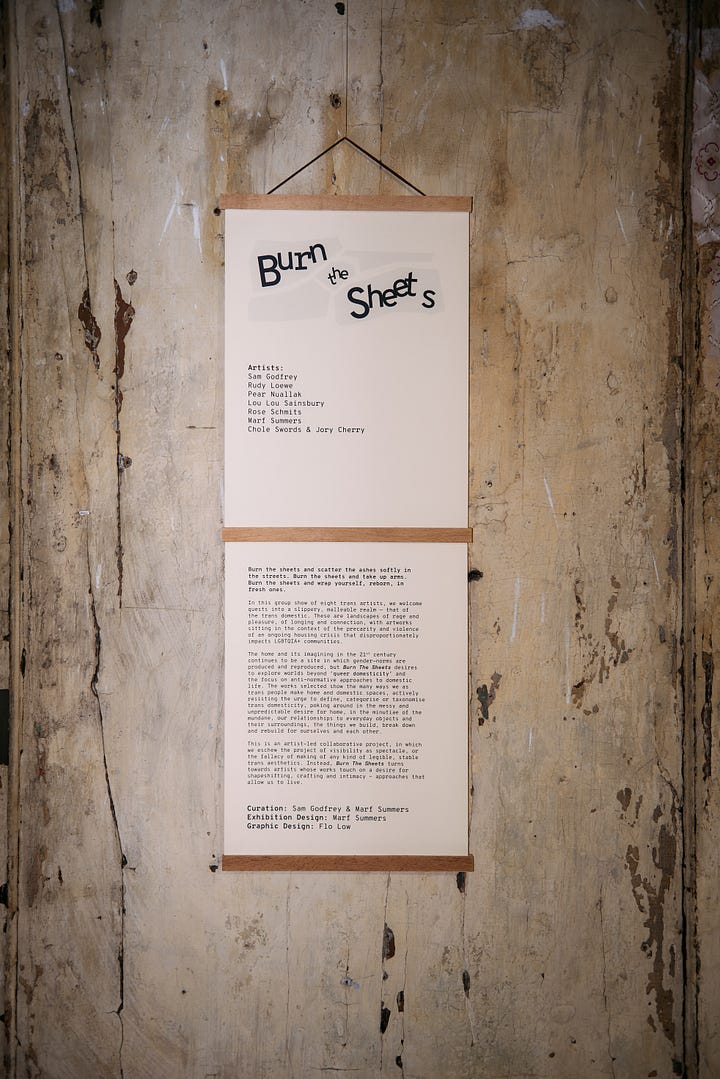
My brief was simply to not pin down what “burn the sheets” or trans domesticity means through the graphics, to complement the exhibition and works without defining anything.
How would you approach a brief like this?
The image that kept on coming to me is the stained glass windows that you see in many door frames in the UK. The frosted glass that lets light through but no clear view, a boundary that is also an invitation inside.
By starting to play with cut-out shapes, further images came to me: ripped up sheets, a patterned fabric, a street map that twists and turns. A home that is a body, domesticity that is in the house but also in the streets, puzzle pieces coming together to reflect a constant process of becoming. Part of the challenge was also to use type in a way that was accessible and readable but still conveyed some sense of illegibility, so I played with digital type with a result that is reminiscent of DIY zine culture.
You have until Sunday 15th June to check it out!
Other business
If you happen to find yourself in Providence, I would highly recommend checking out the exhibition about early methods of printing photographs, Process Work. Now I need to find a studio who will teach me collotype printing, having seen the way this process can translate frottage (as you can see in The Fugitive by Max Ernst).
I also loved these huge woodcuts, Trails I and Trails II by Christiane Baumgartner, based on photographs she took of a TV screen showing footage of planes as part of a World War II documentary. The images are made out of many raised, inked lines, reminiscent of the visual quality of analog TV. I was in awe of the use of a painstaking printmaking process to freeze in time a moment before death and destruction.



